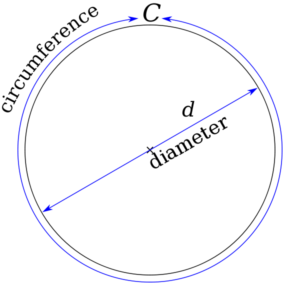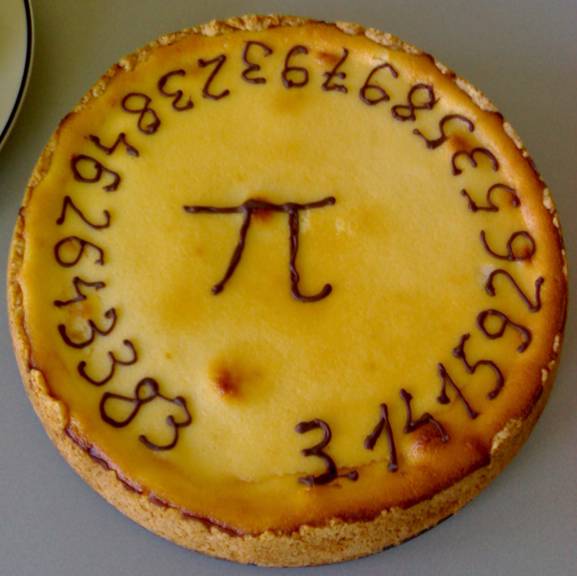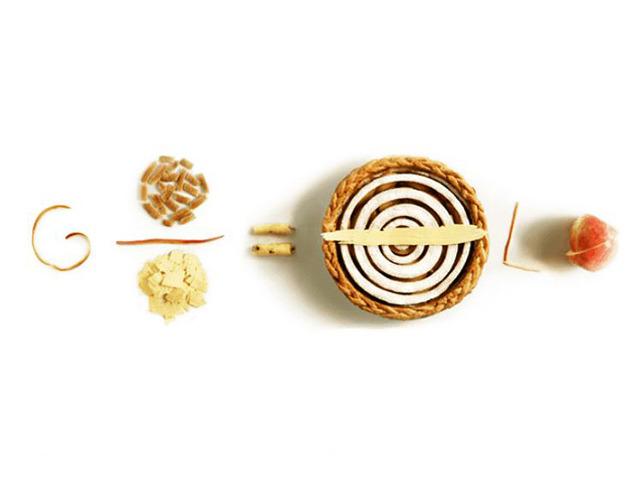A day on which Einstein was born and the great Stephen Hawking passed away.
Since the mathematical constant π (pi) is 3.1415926535897932384626433… and today’s date is 14th March … or in US notation, 3.14 then it is Pi day. First organised by physicist Larry Shaw in 1988 at the San Francisco Exploratorium, it has proven to be popular and so it is celebrated each year.
What the heck is Pi ?

If you draw a circle, of any size, and then draw a line right through the center of the circle from edge to edge, then that line is the diameter.
If the measure the distance right around the outside of the circle, then that is the circumference.
Pi is a mathematical constant that represents something that never ever changes.
- Multiply the diameter by Pi and you will always get the circumference
- And of course you can reverse that by dividing the circumference by Pi to get the diameter.
You can then build upon this … OK, it gets complicated, and unless you are into maths then your eyes will rapidly glaze over if I keep going.
So how are some celebrating this year?
There are many offers out there, for example …
- pizza for only $3.14159265359 in Wichita
- Various outlets in Los Angeles are offering slices of Pie for … (oh come now, you can guess) … $3.14. For stuff that costs far more than $3.14 some outlets opted for a $3.14 discount.
- Orange County – Celebrate this Pi Day with deals on both kinds of pies — pizza and dessert
- USA Today – Celebrate Pi Day today with $3.14 pizza, free pie and more
- Celebrate ‘Pi Day’ with deals throughout Tampa Bay
The above is via a quick google, and so no doubt many others will offer something similar. Might be worth a quick google to see if any outlets near you are offering anything.
Speaking of google, yes Pi Day becomes the new inspiration for Google doodle …
“Today’s delectable Doodle – baked & built by award-winning pastry chef and creator of the Cronut Dominique Ansel – pays homage to this well-rounded mathematical constant by representing the pi formula (circumference divided by diameter) using – what else – pie!,”
Time has a bit of history for us…
Various ancient civilizations calculated approximations of pi, including the Egyptians, Babylonians, and there’s even a reference to the dimensions of a circle in the Bible, but the first calculation of pi as 3.14 is attributed to Greek mathematician Archimedes, who lived in the third century B.C.. It was also independently determined by Chinese mathematician Zu Chongzhi (429–501), who computed pi to six decimal places. Mathematicians adopted the symbol π for the expression in the 18th century: Welsh mathematics teacher William Jones is often credited with the first use of the symbol in 1706.
Scientific American sent me an email with this offer …
In honor of Pi Day, we’re offering $3.14 OR 3.14% off of a $34.99 annual Print + Digital subscription. Which is a better value? Do the math and figure it out! If you want to go with $3.14 off, simply enter code PIDAY at checkout. If you think 3.14% off is the better deal, enter PI2018.
The UK’s Guardian has a few Pi puzzles for you to try out. Nothing too onerous, just a bit of fun.
Exploratorium has an event
The Exploratorium, the place where it all started is hosting their 31st Pi event …
Welcome to our 31st annual π Day! Help us celebrate this never-ending number (3.14159 . . .) and Einstein’s birthday as well. On the afternoon of Wednesday, March 14, 2018, participate in π-related activities and enjoy a piece of pie. If you can’t join us in person, visit Exploratorium Island in Second Life where you can play with πi exhibits.
Founded at the Exploratorium by our own Prince of Pi, physicist Larry Shaw, π Day has become an international holiday, celebrated live and online all around the world.
Search Pi
Here is a website where you can enter a date. It will then search Pi for it and tell you where in Pi that date is.
Pi in the Sky with Nasa
From here …
The “Pi in the Sky” challenge, created by JPL’s Education Office, features math problems that illustrate how pi can be used to learn about all kinds of curious features of the universe, including earthquakes on Mars, helium rain on Jupiter, and planets orbiting other stars.
“All of the problems in the ‘Pi in the Sky’ challenge are real problems that JPL scientists and engineers solve using pi,” said Ota Lutz, a senior education specialist at JPL who helped create the Pi Day Challenge.
In previous years, Pi in the Sky featured problems about how NASA space probes gather information about objects in our solar system, how scientists search for planets around other stars, and how astronomers predict the occurrence of solar eclipses. The new problems will be posted online on March 9, and solutions will be posted on March 15. You can find the previous years’ challenge problems online as well.
The challenge is geared toward students in grades 5 through 12, and JPL offers additional resources for teachers and educators who want to use the problems in the classroom. But Lutz said adults love trying out the problems as well, and everyone should attempt the challenge even if they aren’t familiar with space exploration.
“The Pi in the Sky problems give people a little glimpse into what goes on at JPL,” Lutz said. “And that’s empowering, because it shows people that they can understand some of the magic that goes into space exploration.”
So how should you celebrate?
Good advice from here …
- Have a piece of pie: key lime, apple, cherry, chocolate silk, even pizza pie.
- Keep an eye out for restaurant specials: $3.14 as a price, or a free slice of pie after your meal.
- Connect with other math geeks.
- Challenge each other to recite pi to as many digits as possible. Listen to “The Pi Song.”
Personally, I’ll go for option 1.
Tweets
For a theoretical physicist, you could hardly pick a better exit date than #PiDay and the birthday of #AlbertEinstein (March 14th).
Back to the stars for #StephenHawking pic.twitter.com/gCohwmgYoF
— John Moffitt (@JohnRMoffitt) March 14, 2018
Have a sweet #PiDay everyone! pic.twitter.com/K3UF2N1Opg
— Maxime Duprez (@maximaxoo) March 13, 2018
Celebrate #PiDay2018 with this free fun facts video: https://t.co/GXRcZLldcL #PiDay #iteachmath #MTBoS #edchat #k12 pic.twitter.com/8mafMuPhJ2
— Mashup Math (@mashupmath) March 13, 2018
https://twitter.com/PBSLrnMedia/status/973589417322524673
March 14 (3.14) is Pi Day. A probable delight to the mathematically inclined, perhaps a disappointment to the pastry minded. #PiDay pic.twitter.com/8TImQXR6gz
— Sandra Boynton (@SandyBoynton) March 14, 2018
Be rational or to get real?!#PiDay pic.twitter.com/sScrXGrmap
— Nayeem Iqbal (@nayeemiqbal_) March 14, 2018
3.14 #stephenhawking – one of the greatest #Mathematicians of our time – died on 3.14 Pi Day #PiDay pic.twitter.com/blqcD5v0Q6
— Debra_Yergen (@Debra_Yergen) March 14, 2018
Are you ready for #PiDay on 03.14? Get the celebration started early with a challenge from @NASAJPL_Edu! https://t.co/qpPxlPtcSi pic.twitter.com/deTvsnPO70
— NASA STEM Engagement (@NASAedu) March 9, 2018
Einstein was born on a #PiDay. Hawking was died on a #PiDay. Whats the message here?
— Isham Mohamed (@Isham_M_Iqbal) March 14, 2018


